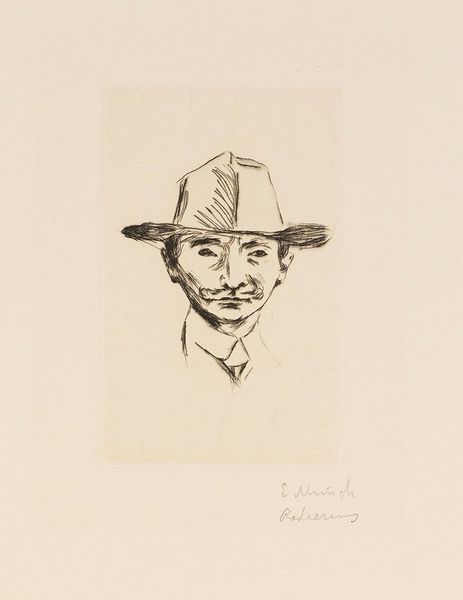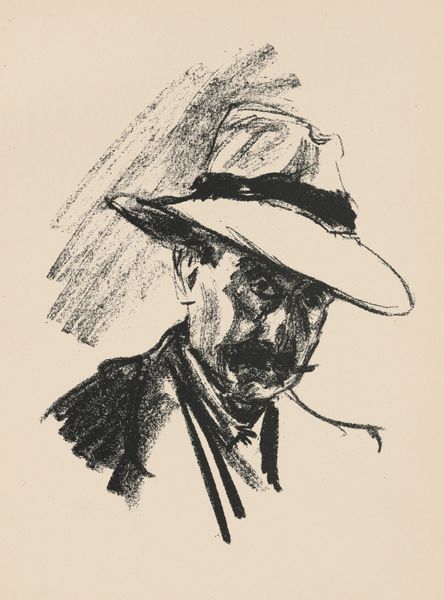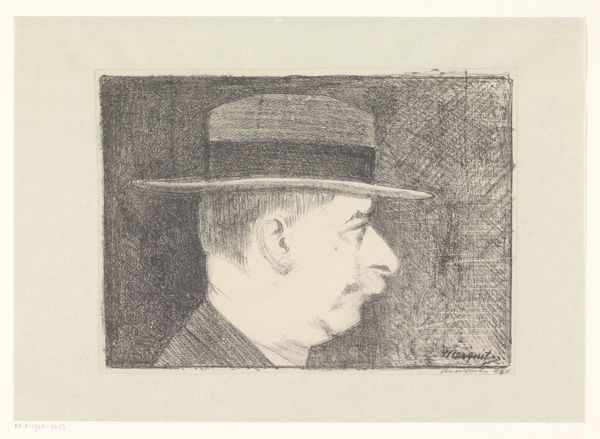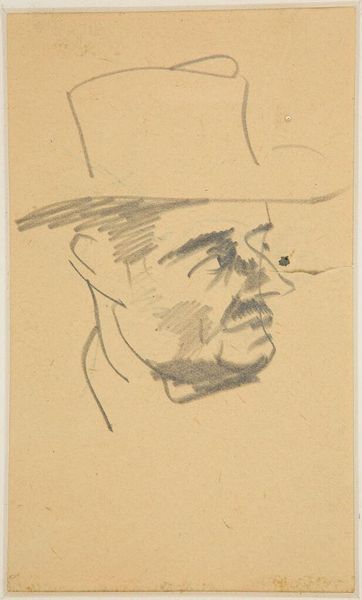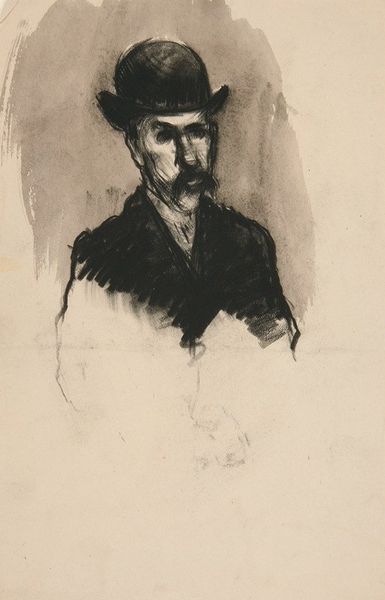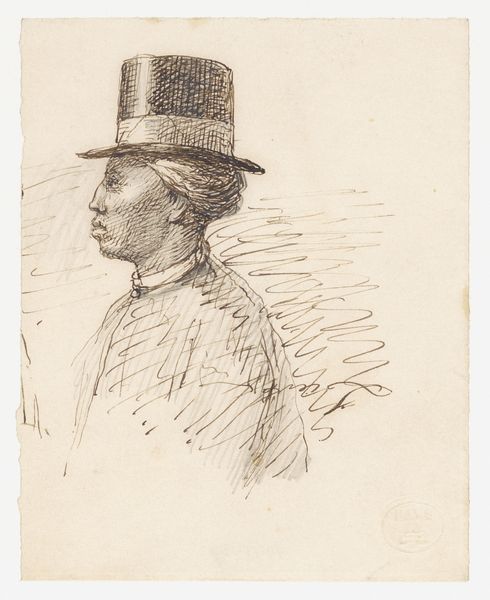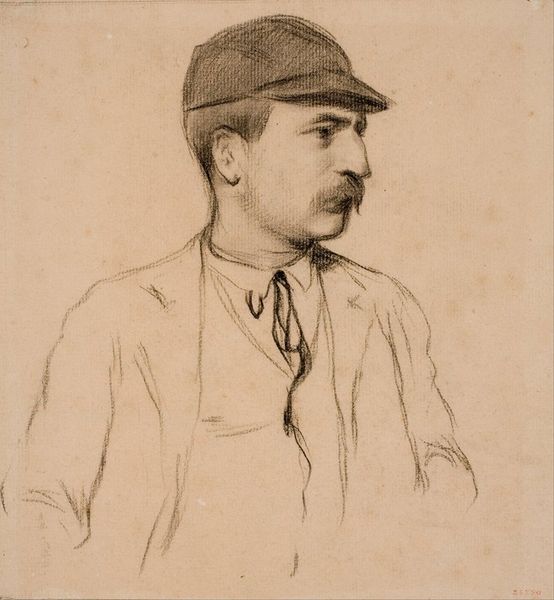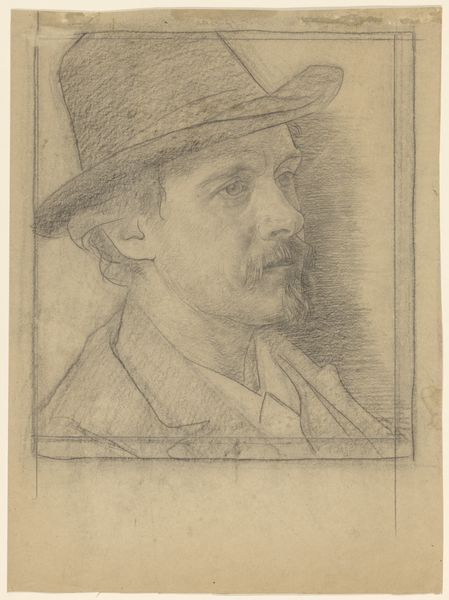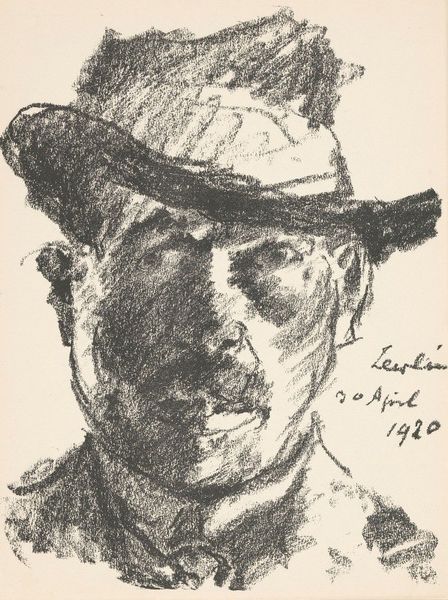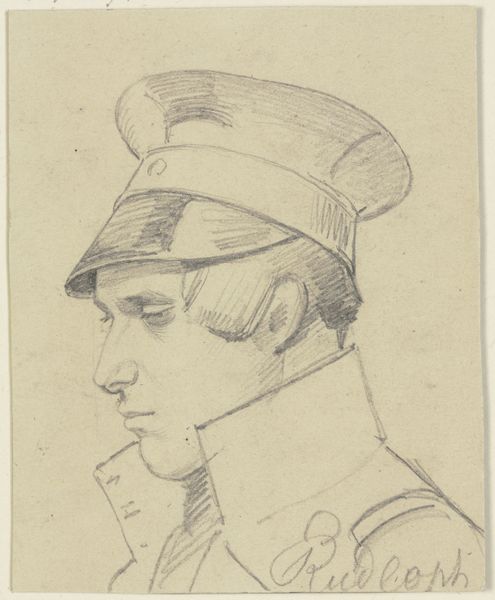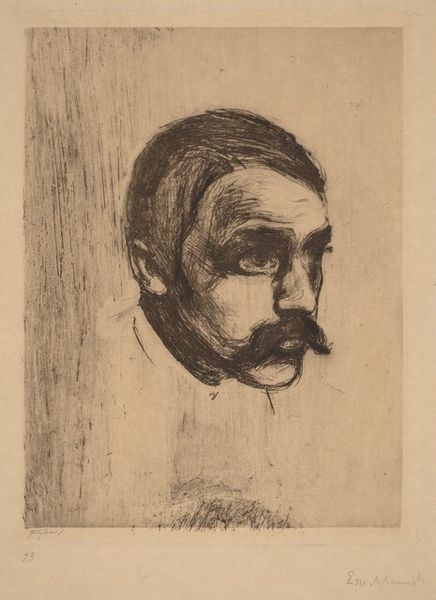
drawing, print, pencil, graphite
#
portrait
#
pencil drawn
#
drawing
#
self-portrait
# print
#
pencil sketch
#
pencil drawing
#
pencil
#
expressionism
#
graphite
#
portrait drawing
Dimensions: image: 19 x 19.2 cm (7 1/2 x 7 9/16 in.) sheet: 30.8 x 26.1 cm (12 1/8 x 10 1/4 in.)
Copyright: National Gallery of Art: CC0 1.0
Curator: Here we have Edvard Munch's drawing, Emanuel Goldstein in a Hat, created sometime between 1908 and 1909. It's graphite on paper, quite a striking portrait. Editor: My first impression? There's a wonderful directness to it. It feels like a captured moment, a fleeting glance, almost… confrontational despite the subject's profile. And that hat—it gives him a kind of jaunty defiance. Curator: Absolutely. Looking at the lines, you see Munch working through form and volume so efficiently. It's expressionistic, definitely, but also intensely observant. You can almost feel the pressure of the graphite on the page, how it builds shadow, establishes form. The labor, really, is on full display. Editor: I’m struck by the contrast. The frantic energy in the sketched lines of the suit, fighting for dominance against the still face. Maybe Munch was thinking about control, about inner life versus public presentation. A touch of paranoia, even. Curator: His portraits during this period do reveal anxiety. It speaks to Munch's interest in the inner states of his sitters, or maybe even the industrial world surrounding their time: raw materials, their fabrication. The production process and how it ties to society. The art reflects that industrial mood so well. Editor: Interesting, very interesting. It also reminds me of old silent films, or even earlier cartoons with those simple stark contrasts of dark ink, you can almost hear a rinky-dink piano, can't you? It is more evocative that a literal portrait. It suggests at inner turmoil and a complicated relationship to himself as a subject, but also to the world. It almost asks "who are you to observe ME?" Curator: Well, by reducing form to line, simplifying materials and gesture to essentials, Munch almost dares us to meet that gaze on HIS terms. I would also add that it’s quite economical, in its own artistic and historic terms! Editor: Agreed. You feel Munch digging into the essentials here, material as message and vice versa, even after over a century we find it utterly affecting.
Comments
No comments
Be the first to comment and join the conversation on the ultimate creative platform.
